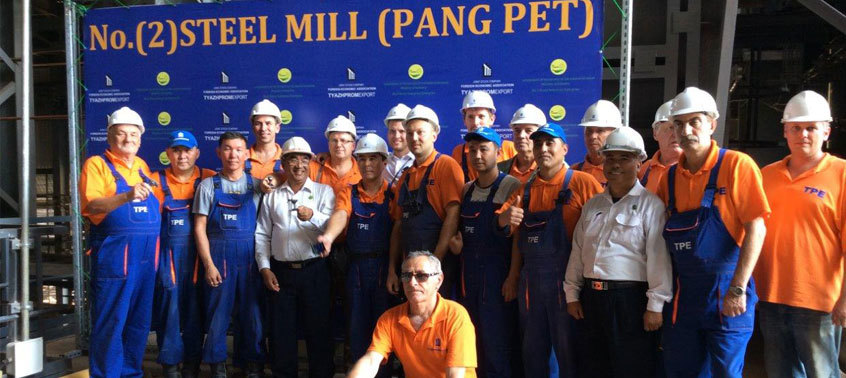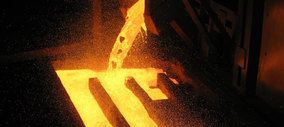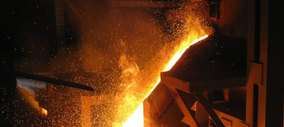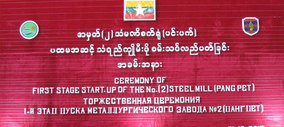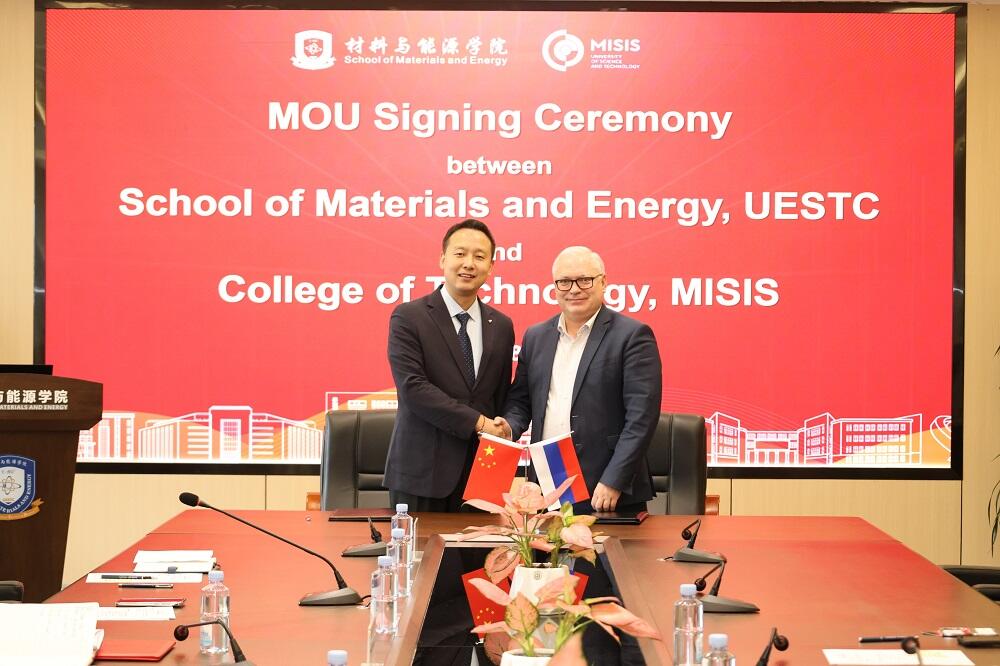The first stage of putting a new metallurgical plant into operation was completed in the Republic of the Union of Myanmar. The plant works on the basis of the innovative Russian Romelt technology developed by NUST MISIS scientists.
Construction of the pig iron plant in the Pang Pet Iron Ore Mine, the Republic of the Union of Myanmar, is the first industrial implementation of the unique Romelt technology. This technology allows low-carbon iron ores to be processed without pre-enrichment and result in a commercial product — pig iron ingots.
In addition to the main product, the Romelt technology also allows to obtain slag for commercial use (construction of roads and buildings) and electricity in quantity that is sufficient not only to run the plant, but for export as well. When the plant achieves full capacity, it will produce up to 200 thousand tons of pig iron per year.
The plant is being built in accordance with the technological assignment from NUST MISIS and with the help of its specialists. The general contractor of the construction is JSC “VO” Tyazhpromexport", part of the government-owned Rostec Corporation. The university not only provides its unique technology, but consulting support as well. It also prepares specialized documentation, trains the staff of the plant and participates in the launch and mastering of the technology. The construction work is headed by NUST MISIS graduate and a citizen of the Republic of the Union of Myanmar Mr. Min Tu.
The Romelt technology was developed by a group of scientists from Moscow Institute of Steel and Alloys under Vladimir Roments’ direction. The pilot Romelt technology-based equipment was run and successfully tested at the Novolipetsk Metallurgical Combine. Metallurgists from Russia, India, Pakistan, Ukraine, Kazakhstan, the Republic of the Union of Myanmar and other countries show interest in construction of plants of this type.
Developed by Russian scientists, the Romelt technology surpasses its foreign analogues. It is more advantageous due to the following features:
• simple design solutions and control systems
• increase in production of pig iron
• metallurgical plant waste reduction and the possibility of non-waste production
• wide variety of lump ores and coal used in production
• reduction of production costs
“Our scientists’ development has shown that energetic coal, low-carbon ores and even metallurgical waste (have a much lower price) are suitable for smelting of pig iron using this technology, whereas a blast furnace requires particular lump ores and crozzling coal. The process developed at NUST MISIS allows us to conserve resources and deal with environmental challenges”, said Alevtina Chernikova, Rector of NUST MISIS.
As for the plant that is being built in Pang Pet, only the first stage of putting it into operation, launch of a furnace for smelting of pig iron, has been completed. The plant does not work at full capacity yet. However, completion of the first stage of putting the metallurgical plant into operation is an important step for development of metallurgy in the Republic of the Union of Myanmar.
